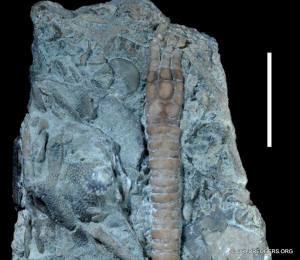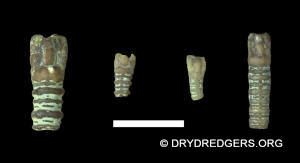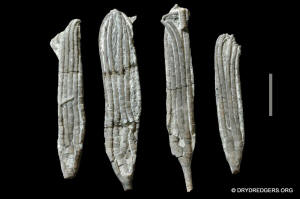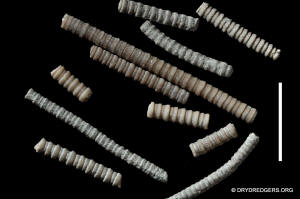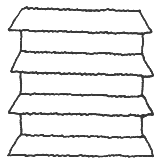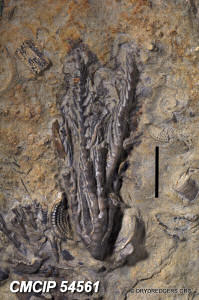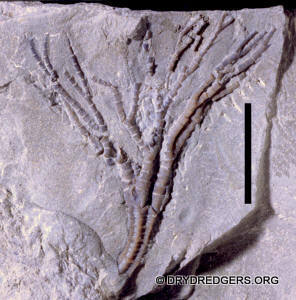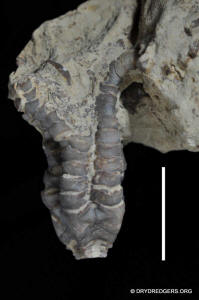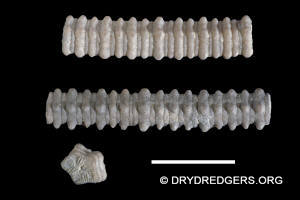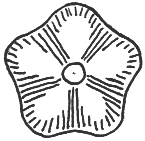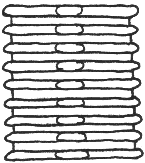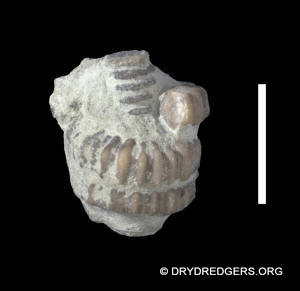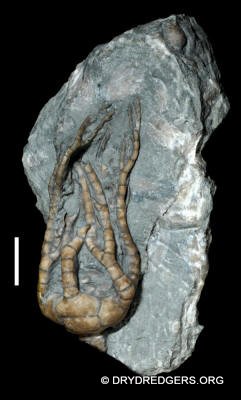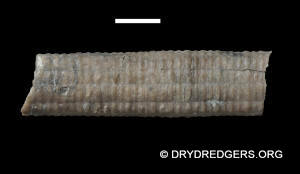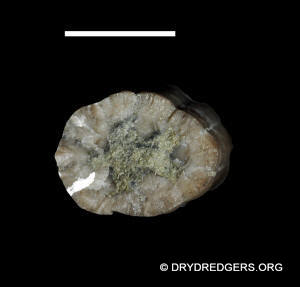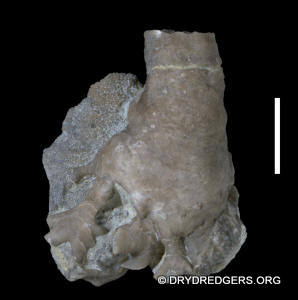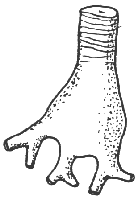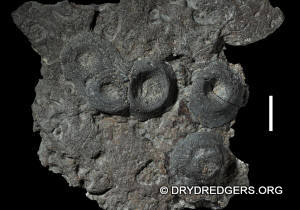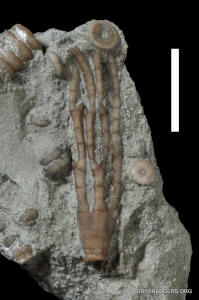
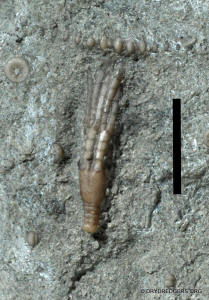
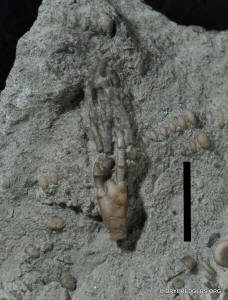
5 mm scale. Photos by Jack Kallmeyer
The cup of C. varibrachialus is smooth with a diameter that is wider than the stem at the base of the cup. The arms branch multiple times above the cup with each branch being equal in diameter. The arms do not bear pinnules. The anal series branches off of the top of the cup near the base of an arm and appears as an unbranched straight tube tucked inside of the arm circlet.
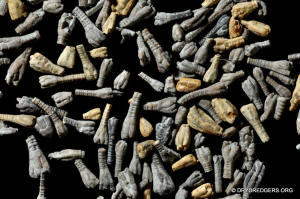
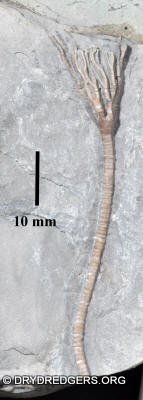

Lower Kope Formation. Collected by Cole Simpson.
Prepared by Ken De la Vega Photo by Jack Kallmeyer
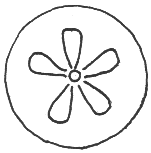
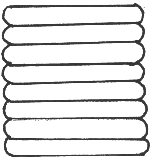
Cincinnaticrinus columnals are the most common stems found throughout the Cincinnnatian. Stems are up to a meter in length. Shape shown is consistent through most of that length. Shape changes to pentagonal near the cup and pentameric at the distal end.
Drawings by Jack Kallmeyer
More Cincinnaticrinus stem sketches
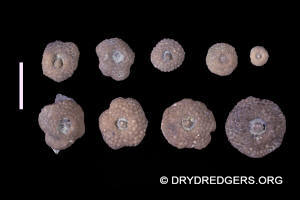
Lichenocrinus tuberculatus
10 mm scale
Photo and artwork by Jack Kallmeyer
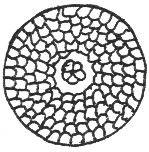

This is a commonly found form of crinoid holdfast throughout the Cincinnatian. These disc shaped structures can be smooth or very bumpy. The remainder of the pentameric stem can be found in well preserved Lichenocrinus.
The above Lichenocrinus tuberculatus drawing and photo is not from Cincinnaticrinus. This is only one form of many types that exist in the Cincinnatian and these illustrations are used only as a representation of how Lichenocrinus appears in general.
See photos of Cincinnaticrinus specimens found on Dry Dredgers field trips.
